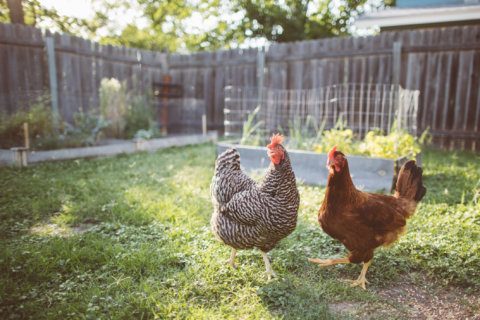
These heat waves are taking their toll. A close friend of mine worked in her garden on one of the recent 99-degree days. She wore a hat, used sunscreen and drank lots of water. I talked to her on the phone while she was weeding; she said she felt great.
That evening she felt weak, disoriented and freezing cold and was rushed to a hospital with a severe case of sunstroke. She is still recovering a week later.
So please use common sense. Sunstroke isn’t sunburn; not even close. Just keep thinking of the word’s suffix: stroke.
If you must work outdoors, get up with the sun (even if you’re typically a late-riser) and you’ll be able to accomplish a safe two or three hours out there. Then, follow the lead of people who live and work in hot climes and take a siesta in the heat of the day.
After dinnertime is second-best, even if it will be much hotter than in the morning and the mosquitoes will be much more active. (They can’t fly nearly as well in the early hours of the day, especially when the dew point is high.)
Keep your powder dry and your chickens cool
Backyard chickens are hot these days — in both sense of the word.
So many people are into having their own fresh eggs that a new book on raising small-scale chickens seems to come out every month.
But as the author of one of those books, Lisa Steele, warned me recently, the birds are extremely heat-sensitive and need help to make it through brutally hot days.
That hit home this past week when a nearby farmer friend confided that she had just lost one of her birds to the heat. In her book “101 Chicken Keeping Hacks,” Steele suggests avoiding such tragedies by keeping their water super-fresh and filled with ice cubes.
She also freezes chunks of watermelon as a special treat for the chickens on hot days. So if you’re a chicken-keeper — especially a newbie — give your birds lots of cool treats; and maybe use a fan to cool the coop.
On Steele’s website, the very first article is about helping backyard chickens beat the heat.
Cool-season lawns are really cooking
You probably know that you can fry an egg on the hood of a parked car in this kind of heat, but did you know that your lawn is also cooking?
Bluegrass, rye and fescue all originated in cool-climate regions in the United Kingdom. They thrive in spring and fall, survive winter nicely, but struggle with high temperatures and humidity. That’s why we call them “cool-season grasses.”
The best way to care for your lawn during a heat wave is to ignore it. Specifically:
- Wait for a break in the weather to cut it.
- Be absolutely sure the grass is still at least 3 inches tall after you cut it.
- Be sure your cutting blade is sharp.
Cutting too low or using a dull blade will make it difficult-to-impossible for your lawn to hold the water it has or to utilize any new rainfall or irrigation.
Don’t panic if your turf takes a break
If you have a lawn composed of Bermuda or zoysia grass, go out and enjoy it; these warm-season grasses originally came from hot and humid areas of the globe and, unlike all other living things, thrive in a D.C.-area summer.
Bluegrass and the fescues do not thrive, but they’ll survive summer if you don’t panic. Just as zoysia turns tan and goes dormant over the winter, your cool-season lawn may turn brown for a short time during intense heat waves.
This is temporary. The lawn is storing its energy down in its root system and will release that energy and turn green again when the weather cools … unless you cut it and release all that stored moisture, then it might stay brown. Or even worse, if you feed it with a typical high-nitrogen fertilizer, then parts of it are certain to stay brown.
Never feed a cool-season lawn during the summer. And, don’t allow a service to feed or otherwise treat it, either. Spring and fall are the care times for cool-season lawns.
Heat wave warnings
- Garden in the early morning when it’s the coolest out. (And harvesting your garden produce early in the day ensures the best taste.)
- Harvest ripe produce promptly. This kind of heat can blast half of the flavor out of a ripe tomato in a single day.
- Water plastic, wood and other nonporous containers every other day if there is no rain.
- Water terra-cotta containers every day if it has not been raining for days. (They constantly wick their moisture into the air.)
- Water hanging baskets made of plastic every day if we don’t get rain.
- Water hanging baskets made of peat or coir several times a day — or move them into shade for a while.
- If it has not been raining for four or five days, you can and should water your lawn and garden, but only first thing in the morning and only for several hours. Don’t water in the heat of the day, in the evening or for short periods of time.
Mike McGrath was editor-in-chief of ORGANIC GARDENING magazine from 1990 through 1997. He has been the host of the nationally syndicated public radio show “You Bet Your Garden” since 1998 and WTOP Garden Editor since 1999. Send him your garden or pest control questions at MikeMcG@PTD.net.








